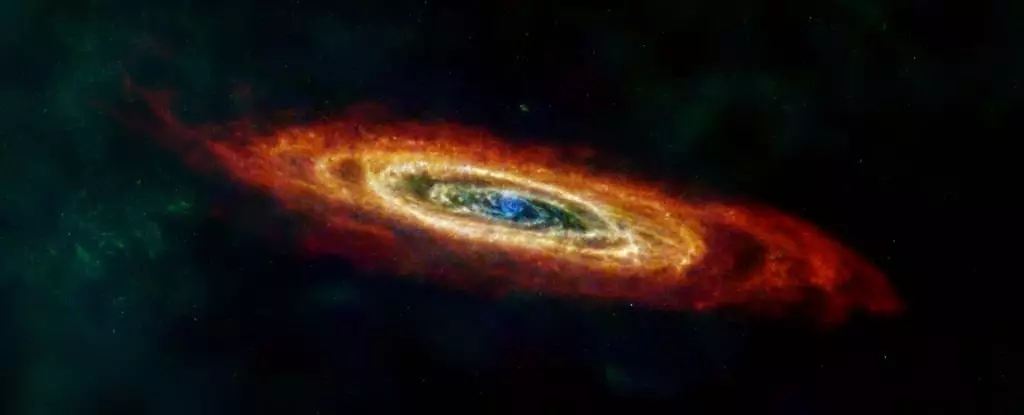Massive stars, those titans of the cosmos that boast masses at least eight times greater than that of our Sun, embark on a compelling journey throughout their lifetimes. This journey culminates in a dramatic finale known as a supernova — an event so powerful that it can overshadow entire galaxies for extended periods. Traditionally, supernovae have been understood as the explosive deaths of these celestial giants, resulting in either a neutron star or a black hole. New research, however, introduces a groundbreaking concept: some massive stars may bypass the explosive stage entirely and collapse directly into black holes without the highly anticipated supernova. This revelation challenges long-held assumptions about stellar evolution and the mechanisms governing celestial explosions.
The life of a massive star is characterized by a precarious balance between two opposing forces: the outward pressure generated by nuclear fusion in its core and the inward gravitational pull striving to collapse it. Throughout most of their existence, massive stars fuse hydrogen into helium, generating energy that counteracts gravitational contraction. However, as these stellar giants exhaust their hydrogen fuel and transition into their final evolutionary phases, the balance begins to shift. The fusion process weakens, leading to a gradual succession of events that typically concludes with a core collapse and a dazzling supernova explosion.
Yet, it appears that in some instances, this paradigm is not maintained. The recent discovery of M31-2014-DS1, a supergiant star situated in the Andromeda galaxy, highlights a significant deviation from our expectations. Instead of undergoing the explosive death associated with core-collapse supernovae, M31-2014-DS1 appears to have descended silently into a black hole.
Researchers led by Kishalay De from the Kavli Institute for Astrophysics and Space Research at MIT uncovered compelling evidence surrounding the fate of M31-2014-DS1. Initially detected in mid-infrared wavelengths in 2014, the star exhibited a remarkable stability in brightness over the course of 1,000 days before experiencing a dramatic fade. Subsequent observations between 2016 and 2019 revealed no signs of a supernova explosion despite the ejection of a dust shell, suggesting a thorough lack of evidence for the energetic outburst that typically accompanies such events.
Interestingly, the research indicates that M31-2014-DS1 was born with an estimated 20 solar masses and entered its terminal stage with roughly 6.7 solar masses remaining. The absence of an observable outburst during its fade is startling, raising questions about the mechanisms that could lead to a star’s demise without the cataclysmic explosion we have come to expect.
Supernovae that result from core collapse are complex events internally driven by processes like neutronization, where electrons combine with protons under extreme pressures, resulting in the generation of neutrons and a cascade of neutrinos. This phenomenon creates a neutrino shock wave, a process that holds profound implications for stellar collapse. The neutrinos can deposit energy back into the stellar material, potentially reviving the shock wave, which leads to a massive outburst.
In the case of M31-2014-DS1, it appears that the neutrino shock failed to revive, resulting in the collapse of the core and ultimately forming a black hole instead of a supernova explosion. This raises significant questions about the conditions that govern a star’s end, particularly concerning why some stars seem to succeed in shedding their outer layers while others do not.
The findings concerning M31-2014-DS1 suggest that the existing understanding of stellar evolution, particularly regarding massive stars and their ultimate fates, may require reevaluation. While supernovae are relatively rare phenomena—occurring approximately once every hundred years in our Milky Way—recent research posits that between 20% and 30% of massive stars could potentially end their lives as failed supernovae, raising the likelihood that many more stars have withheld their explosive finale than previously assumed.
M31-2014-DS1 is not alone in this category; astronomers have identified other candidates for potential failed supernovae, further emphasizing the importance of ongoing observation and research in the field. As our tools and methodologies evolve, the astronomical community may uncover additional instances of stars that have unobtrusively transitioned into black holes, allowing scientists a greater understanding of these enigmatic processes underpinning stellar lifecycles.
The enigmatic fate of M31-2014-DS1 offers a compelling glimpse into the complex narratives characterizing the lives of massive stars. By elucidating the potential pathways through which these celestial giants can ultimately disappear without a supernova, researchers like De and his colleagues are shedding light on previously uncharted aspects of stellar evolution. Continued examination of such phenomena not only enriches our comprehension of the universe but also ignites curiosity about the myriad mysteries enfolding the cosmos.


Leave a Reply